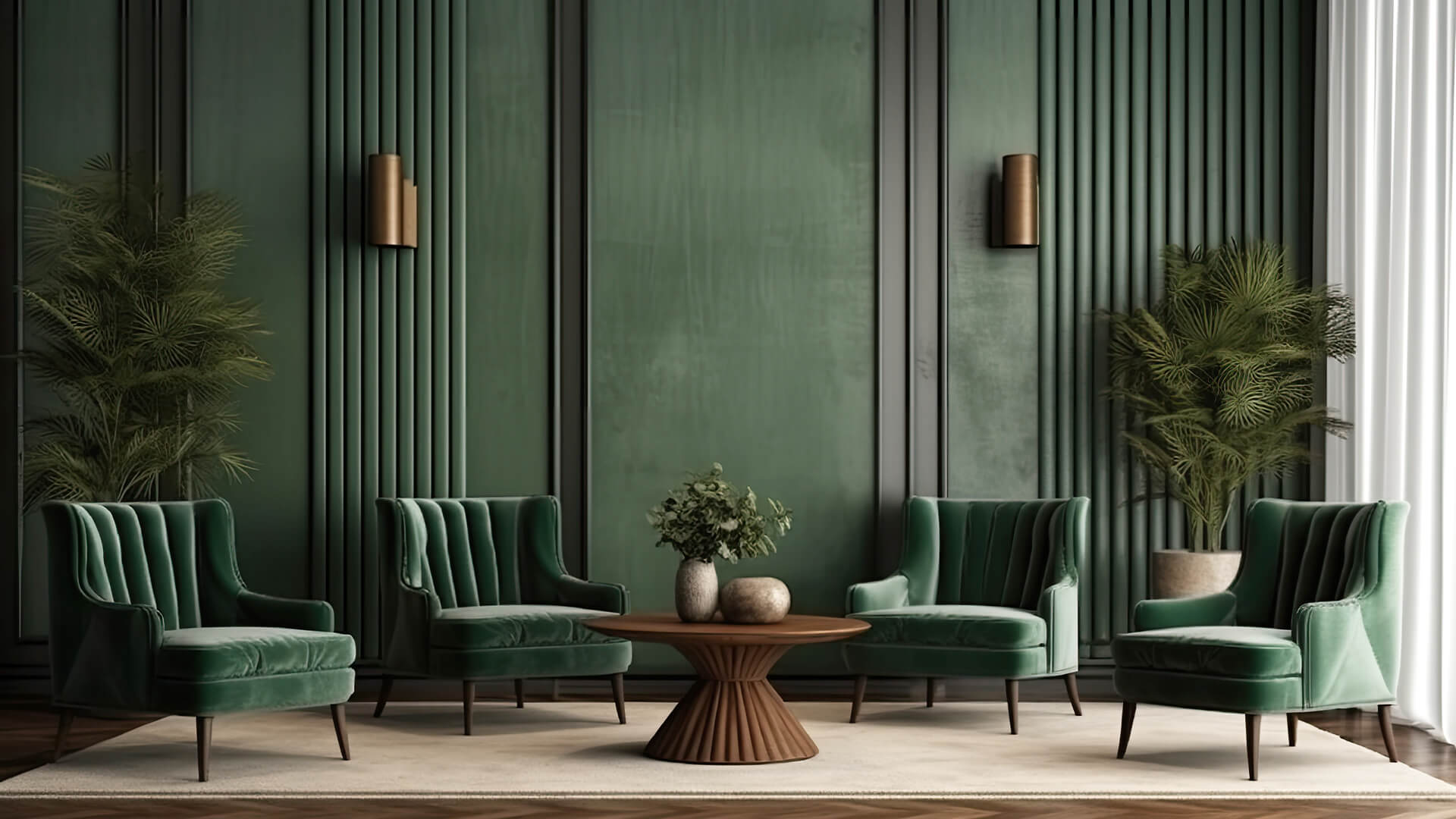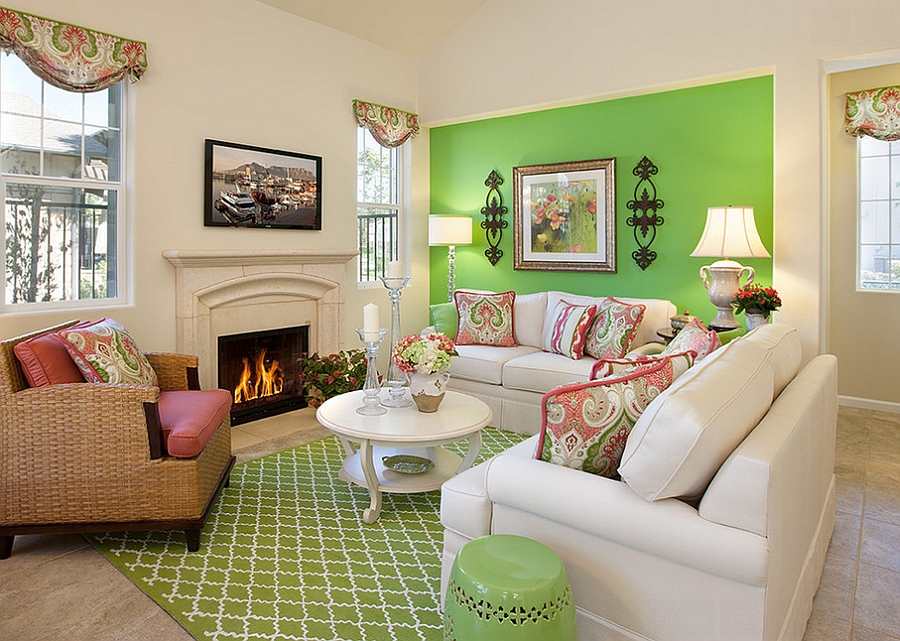jogjadaily.com – This shift in mindset is also influencing how we design and decorate our homes. Green home decor is a growing trend that promotes eco-conscious living by incorporating sustainable materials, energy-efficient products, and natural elements into the home. Whether you’re redesigning your space or simply looking to make small, meaningful changes, creating an eco-friendly home can reduce your carbon footprint while enhancing your living environment.
Table of Contents
ToggleWhy Green Home Decor Matters
The concept of green home decor goes beyond aesthetics. It reflects a lifestyle choice that prioritizes the health of both the planet and the occupants of the home. Traditional home decor can involve harmful chemicals, energy-intensive manufacturing processes, and wasteful materials. By embracing eco-friendly alternatives, you’re not only creating a healthier indoor environment but also contributing to the global effort to reduce environmental damage.

Incorporating sustainable design principles into your home can significantly reduce waste, lower energy consumption, and promote environmental conservation. It also encourages a mindful approach to consumption, emphasizing quality over quantity and a preference for natural materials over synthetic ones.
Key Elements of Green Home Decor
Sustainable Materials
One of the core principles of eco-conscious home decor is using sustainable materials. This can include reclaimed wood, bamboo, cork, recycled glass, and organic fabrics. These materials are not only renewable but also durable, reducing the need for frequent replacements.
- Reclaimed Wood: Furniture and decor made from reclaimed wood are excellent for adding rustic charm while reducing deforestation. Each piece has its unique history, making it a great conversation starter.
- Bamboo: This fast-growing plant is one of the most sustainable resources available. Bamboo can be used for flooring, furniture, and even home accessories.
- Recycled Glass: Glass that has been repurposed from old bottles or windows can be transformed into beautiful vases, countertops, and more. It’s a great way to reduce waste and add a touch of elegance to your space.
Energy-Efficient Lighting
Lighting plays a significant role in the atmosphere of a home, and choosing energy-efficient lighting can reduce your energy bills and environmental impact. Opt for LED or CFL bulbs, which consume less energy and last longer than traditional incandescent bulbs.
Natural light is another great way to reduce energy consumption. Large windows and skylights allow more sunlight to flood your home, reducing the need for artificial lighting during the day. Consider using curtains or blinds made from organic fabrics to complement your sustainable decor.
Indoor Plants
Indoor plants are one of the easiest and most aesthetically pleasing ways to bring nature into your home. Not only do they enhance the decor, but they also purify the air by removing toxins and increasing oxygen levels. Popular options include:
- Succulents: Low-maintenance plants that require minimal water and care, perfect for busy individuals.
- Snake Plants: Known for their air-purifying qualities, snake plants thrive in low light and are extremely hardy.
- Fiddle Leaf Figs: For a more dramatic statement, these large-leafed plants add a bold, green touch to any room.
Having indoor plants also contributes to your well-being, as they create a calming atmosphere and improve air quality, which is essential for healthy living.
Eco-Friendly Furniture
When selecting furniture for a green home, prioritize pieces that are made from sustainable materials or are second-hand. Vintage or antique furniture is a great choice because it reduces demand for new production and adds character to your space.
Look for furniture companies that are committed to eco-friendly practices, such as using non-toxic finishes, low-VOC (volatile organic compound) adhesives, and sustainable wood. Brands that offer modular furniture allow for easy repairs and upgrades, extending the life of the product and reducing waste.
Non-Toxic Paints and Finishes
Many conventional paints and finishes release harmful chemicals, known as VOCs, into the air, which can negatively affect indoor air quality and overall health. Choosing low-VOC or zero-VOC paints can make a big difference in creating a healthier living environment.
Natural paints made from ingredients like clay, chalk, or milk are becoming more popular for their non-toxic properties. These paints not only provide vibrant color options but also allow your walls to breathe, which improves air circulation and reduces the risk of mold growth.
Water Conservation
Incorporating water-saving technologies into your home can greatly contribute to sustainability. Consider installing low-flow faucets, showerheads, and toilets that use less water without sacrificing performance.
You can also collect rainwater for use in watering indoor plants or outdoor gardens.
For landscaping, choose native plants that are adapted to your region’s climate and require less water. Xeriscaping, which involves using drought-resistant plants, is another great way to reduce water consumption while maintaining a beautiful garden.
Green Home Decor Tips for Every Room

Living Room: In the living room, focus on furniture made from reclaimed or sustainable wood, and opt for cushions and throws made from organic cotton or bamboo fibers. Incorporate natural textures, such as woven baskets or wool rugs, to create a warm and inviting atmosphere.
Kitchen: The kitchen is a great place to implement energy-efficient appliances. Look for refrigerators, dishwashers, and ovens with the Energy Star label to ensure they meet energy-saving criteria.
Also, consider composting food waste and using recycled or biodegradable materials for kitchen storage.
Bathroom: Choose eco-friendly cleaning products, bamboo toothbrushes, and organic cotton towels to minimize your environmental impact. Installing water-saving fixtures, such as low-flow showerheads, will help conserve water without affecting your shower experience.
Bedroom: In the bedroom, invest in a mattress made from natural latex or organic cotton. Opt for bedding made from sustainable materials like linen or bamboo, and use eco-friendly paints on the walls to create a healthy sleeping environment.
The Benefits of Green Home Decor
The benefits of incorporating green home decor into your living space go beyond aesthetics. Some of the key advantages include:
- Reduced environmental impact: By choosing sustainable materials and energy-efficient products, you’re directly contributing to the reduction of waste and pollution.
- Improved indoor air quality: Non-toxic paints, natural materials, and indoor plants can significantly improve the air you breathe, reducing the risk of allergies and other health issues.
- Cost savings: Energy-efficient appliances and lighting, as well as water-saving fixtures, can help lower your utility bills over time.
- Connection to nature: Green home decor encourages a connection to the natural world, creating a peaceful and harmonious living environment.
Conclusion
Embracing green home decor is an excellent way to create a stylish, sustainable, and healthy living space. From using eco-friendly materials to incorporating indoor plants and energy-efficient lighting, there are countless ways to reduce your environmental footprint without sacrificing comfort or beauty.
As more people prioritize eco-conscious living, green home decor is set to become a lasting trend that benefits both the planet and its inhabitants. By making thoughtful choices about what we bring into our homes, we can create a more sustainable future, one beautiful space at a time.



